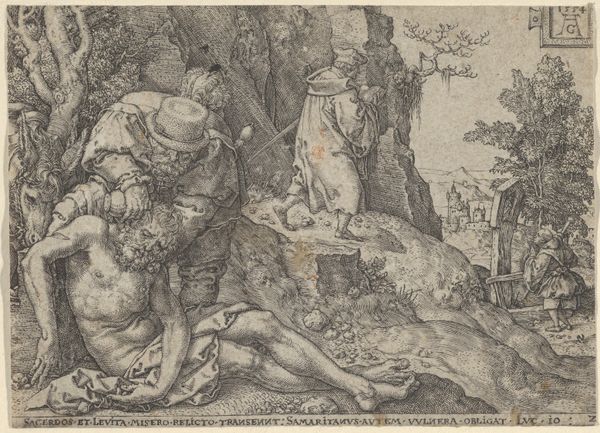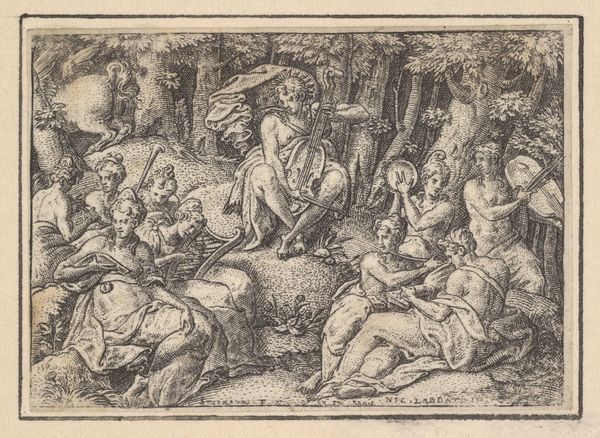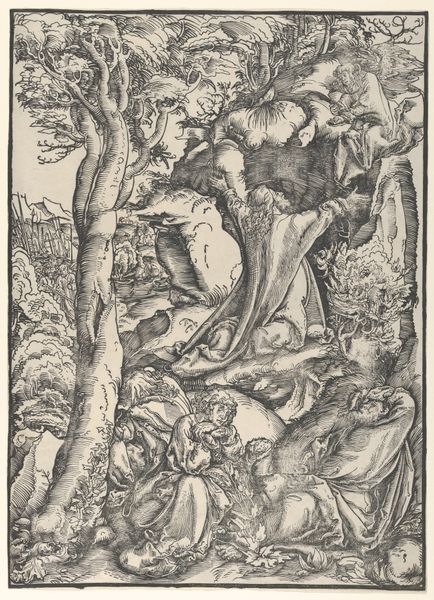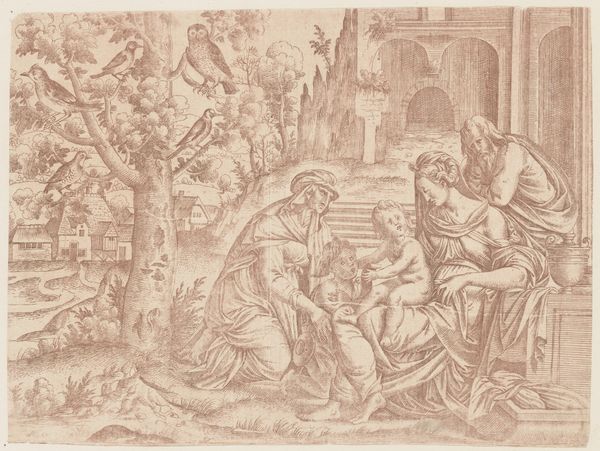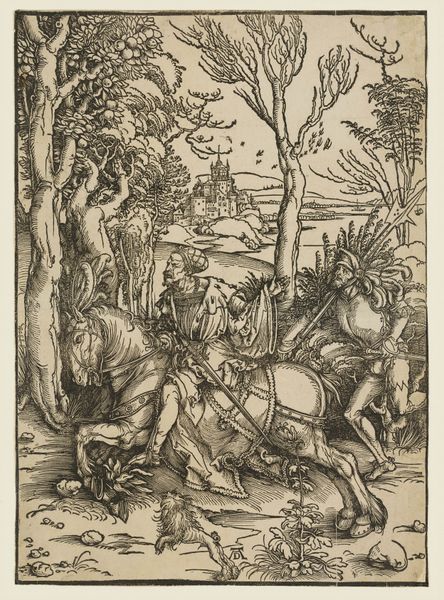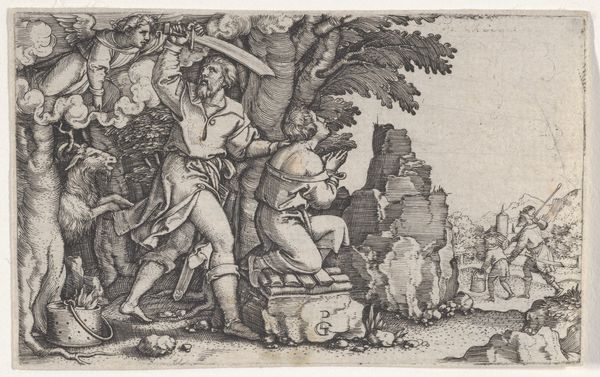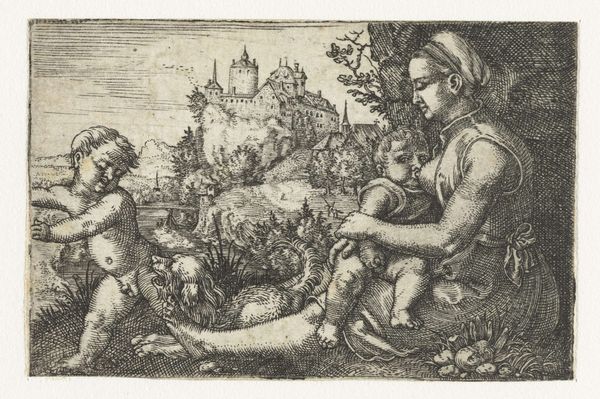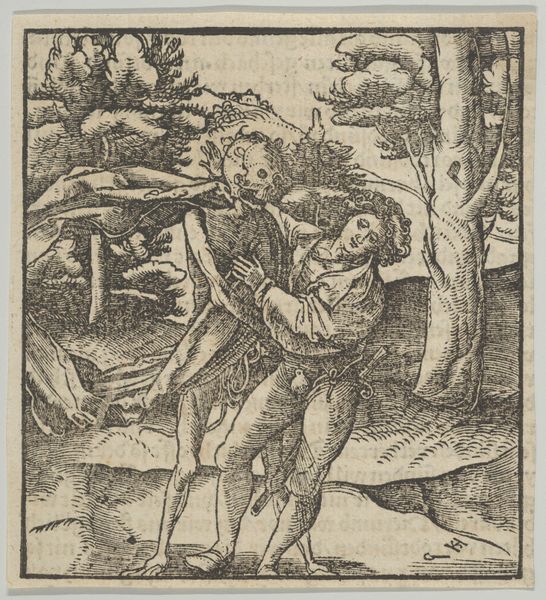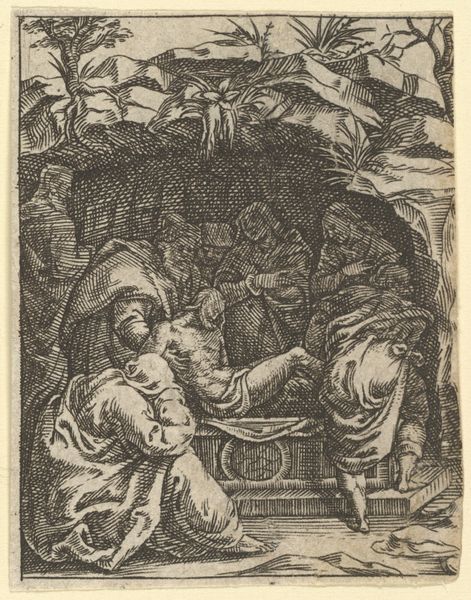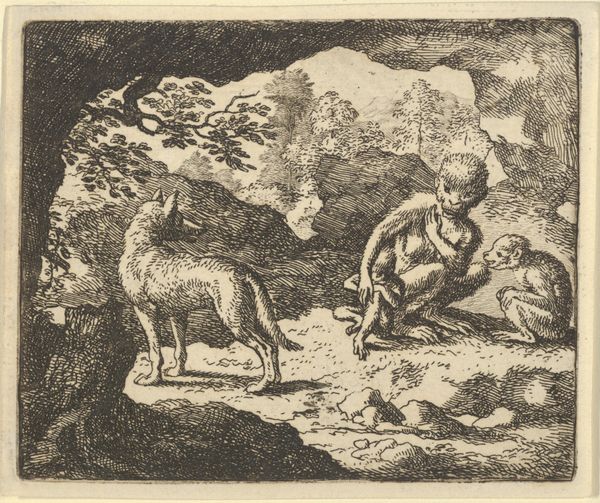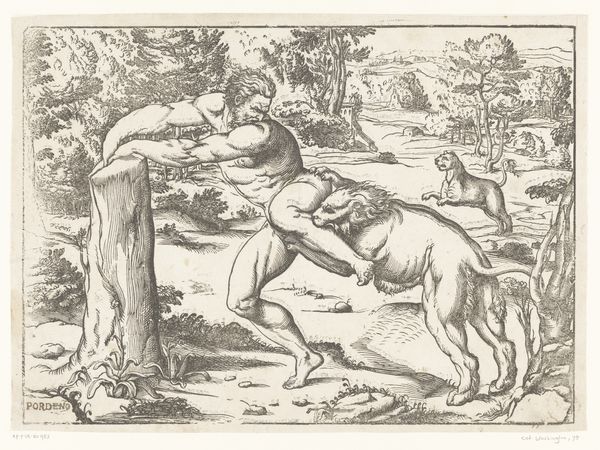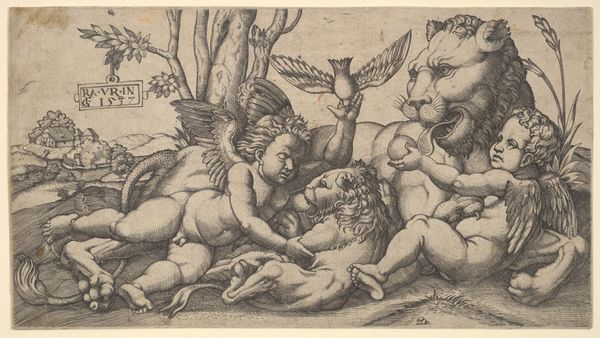
The Sixth of Ten Commandments, from "Die zehe gebot" 1500 - 1545
0:00
0:00
drawing, print, woodcut
#
drawing
#
pen drawing
# print
#
landscape
#
woodcut
#
genre-painting
#
northern-renaissance
#
erotic-art
Dimensions: Sheet: 4 3/16 × 5 1/4 in. (10.6 × 13.4 cm)
Copyright: Public Domain
Editor: Here we have Hans Baldung's woodcut, "The Sixth of Ten Commandments, from 'Die zehe gebot'," dating from between 1500 and 1545. The landscape setting and the couple's interaction create a somewhat uneasy yet intimate atmosphere. What statements do you think Baldung is trying to make about courtship and lust, given the title of the work? Curator: It’s interesting you pick up on that tension. Baldung, deeply embedded in the social and religious context of the Northern Renaissance, uses this woodcut not simply to illustrate a commandment, but to explore the socio-political undercurrents surrounding morality and desire. He seems to highlight the contradictions within the societal norms of his time. Editor: Contradictions? How so? Curator: The piece invites the public to consider that a commandment, traditionally seen as a rigid religious constraint, is played out by real humans, who inhabit a public and social sphere. Do you notice anything about the relationship between the figures and the landscape, and what impact this has on our reading of them? Editor: Now that you mention it, they don’t seem entirely separate. The landscape sort of echoes their embrace. Is that common for woodcuts like this at the time? Curator: Well, printmaking served a vital public function then, spreading both religious and secular imagery. This merging of human interaction and environment implicates the viewer in the interpretation. The political undercurrent simmers beneath the surface of an almost playful presentation. Editor: I never thought about the public reception aspect so deeply. I suppose, these weren’t made for private enjoyment. Curator: Precisely. Baldung used accessible, reproducible art to enter a very public debate, questioning the institutions framing those debates. A woodcut allowed widespread and affordable circulation. Editor: I hadn't considered how the medium itself participates in the social commentary. Thanks, I see a lot more nuance in the composition now!
Comments
No comments
Be the first to comment and join the conversation on the ultimate creative platform.

